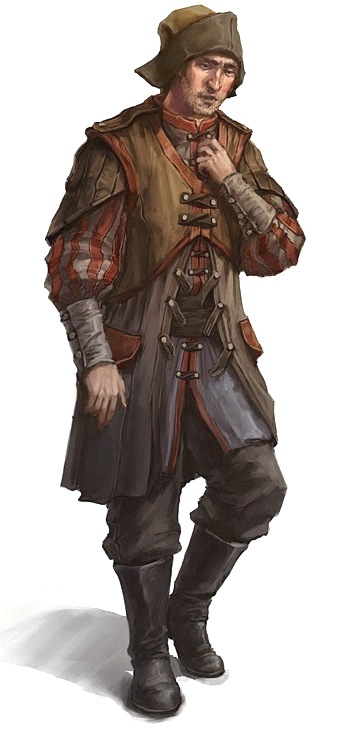Commoner (non-player character)
Commoners are members of the lowest social class in society and represent the bulk of humanoid persons within the game world – regardless, for the most part, of race. They're primarily engaged in agricultural work, the collection of food or as labourers within urban settings. They typically possess a single sage ability (often in farming, fishing, herding, foraging and the like), equalling an amateur until the age of 35 to 45, when they normally count as authorities in their negligible crafts.
Contents
The life of a commoner is characterised by its simplicity and closeness to nature, as their livelihood is directly tied to the land. Their diet primarily consists of staple foods and durables.
As Combatants
Being non-levelled, commoners only have as many hit points as their body mass provides — typically 1d8 for human males and 1d6 for human females. A commoner's negative hit points are much reduced from that of levelled persons, such that they will die if damage reduces them to below -3 hit points.
As combatants they are very poor. Their typical morale begins at 10, a roll they must achieve with 2d6 before having the nerve to enter combat. Failing this roll, they will flee or beg for mercy, depending on the circumstance.
They possess no proficiencies and must fight with tools they use every day — suffering a -1 penalty "to hit" even with those. Such tools function as a club that causes 1-4 damage. With any other weapon, they suffer a -6 proficiency penalty.
